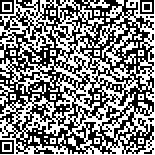中文摘要:西藏改则地区属班公湖_怒江板块缝合带西段,该区岩金的找矿和理论 研究十分薄弱,找矿方向不明确。文章从金的成矿背景、成矿特征和成矿年代学研究入手, 探讨了该缝合带演化过程中金的成矿作用,试图为该区金找矿方向的确立提供依据。研究表 明,该区金矿主要分布在羌塘板片南缘铁格山一带的侏罗系雁石坪群和缝合带内木嘎岗日地 体达查一带的侏罗系木嘎岗日群浅变质火山_沉积建造中。大地构造及地球化学研究反映出 雁石坪群和木嘎岗日群是大陆裂谷_边缘海环境中形成的亚稳定的复理石沉积,其形成伴随 有较大规模的蛇绿岩和基性火山喷发,同时有较明显的海底热水活动,地层中集中了较丰富 的Au、Cu等幔源物质而成为Au的初始矿源层。早白垩世晚期,在冈底斯地块和羌塘地块碰撞 拼贴过程中,富含Au、Cu等幔源组分的I型中酸性岩浆上侵,并加热下渗的海水,使之与岩 浆混合成为汲取初始矿源层、蛇绿岩和中酸性岩浆岩中Au的有效介质,进而携带Au在各种岩 石裂隙中运移沉淀,形成蚀变岩_石英脉过渡型金矿体。在晚白垩世海盆关闭且发生差异隆 升造山过程中,原有矿床的顶部被剥蚀,并以砂矿的形式开始了金矿的再生。
Abstract:Gaize area is located in the western part of Bangongcuo_Nujiang plate suture zone in Tibet, where original gold mineralization was poorly explored and studied and, therefore, the prospecting orientation was not clear. Based on the study of the metallogenic background, characteristics and ages, this paper discusses the model of gold mineralization in Gaize area for the purpose of finding out some clues to gold prospecting. Studies show that gold deposits are mainly distributed in Jurassic Yanshiping Group and Mugagangri Group, both of which are typical epimetamorphic volcano_sedimentary formations. The Yanshiping Group occurs in Tiegeshan area on the southern margin of Qiangtang plate chip, whereas the Mugagangri Group is present in Dacha area and belongs to Mugagangri block within the suture zone. It is clearly known from tectonic and geochemical studies that the Yanshiping Group and Mugagangri Group were Jurassic metastable flysch sedimentary rocks formed in the continental rift valley and marginal sea along the suture zone. The formation of the strata was accompanied by large_scale ophiolite and basic volcanic eruption as well as hydrothermal fluid activities on the ocean floor. These processes concentrated such mantle_derived materials as Au and Cu in the strata and hence the strata became the primary source bed of the gold ore deposits. In the process of collision and amalgamation between the Gangdise block and the Qiangtang block at the late stage of Early Cretaceous, the I_type intermediate_acidic magma rich in mantle_derived components such as Au and Cu moved upward and heated the downward_infiltrated marine water. This caused the marine water to mix with the magmatic water, thus forming the effective media. Such media extracted Au from the primary source bed, ophiolite, basic and intermediate_acidic magmatic rocks and carried Au through various cracks in the rocks to form gold orebodies of transitional type between the altered rock type and the quartz vein type. In Late Cretaceous, the ocean basin came to a closure and the differential orogenic uplift took place. As a result, the top part of the original deposit was eroded, resulting in the rebirth of the gold deposit and the formation of placers.
文章编号:
中图分类号:
文献标志码:
基金项目:国家自然科学基金(40073012)、国家重点基础研究发展规划(G1998040800)、中国地质调查局地质大调查(20001020223023, 200313000068_02)、西藏地质矿产厅(2000_2002)
引用文本:
李胜荣,肖 润,周 肃,莫宣学,申俊峰,闫柏琨,刘 波.2005.西藏改则地区金成矿作用[J].矿床地质,24(1):1~14.2005.Gold mineralization in Gaize area, Tibet[J].Mineral Deposits24(1):1~14
图/表

